
It is again the time of the year for the most-awaited conference to stay up to date with Microsoft Integration tech.
First things first, with this blog we’ll take you through all the highlights and important announcements that we had on day 1 of INTEGRATE 2022. Buckle Up!
After two years of remote INTEGRATE event, Saravana welcomes everyone to the 10th edition of INTEGRATE 2022. Overall 750+ audience with 250 live attendees and 500+ remote attendees.
After the quick introduction of Kovai.co and INTEGRATE, Saravana shared a quick rewind about the Key announcements made in the 10 years’ INTEGRATE journey.
Key initiatives this year – Migrating to BizTalk Server 2020 book announcement.
A special mention to Microsoft and Microsoft MVP community and our sponsors for making the INTEGRATE a great success.
Saravana introduced the keynote speaker – Balan Subramaniyan
Keynote at #INTEGRATE is always a very much-awaited session that sets the context for the next 3 days of a highly technology immersive conference.
Balan Subramanian, who leads APIM, Logic apps, DAPR, and other platform services in Microsoft. starts his first session at INTEGRATE conference highlighting the importance of Integration like when increase in integration takes place etc.
This empowers all individuals to be a part of the integration journey, from pro-IT developers exposing backend systems with APIs to citizen developers consuming those APIs in low code frontends.
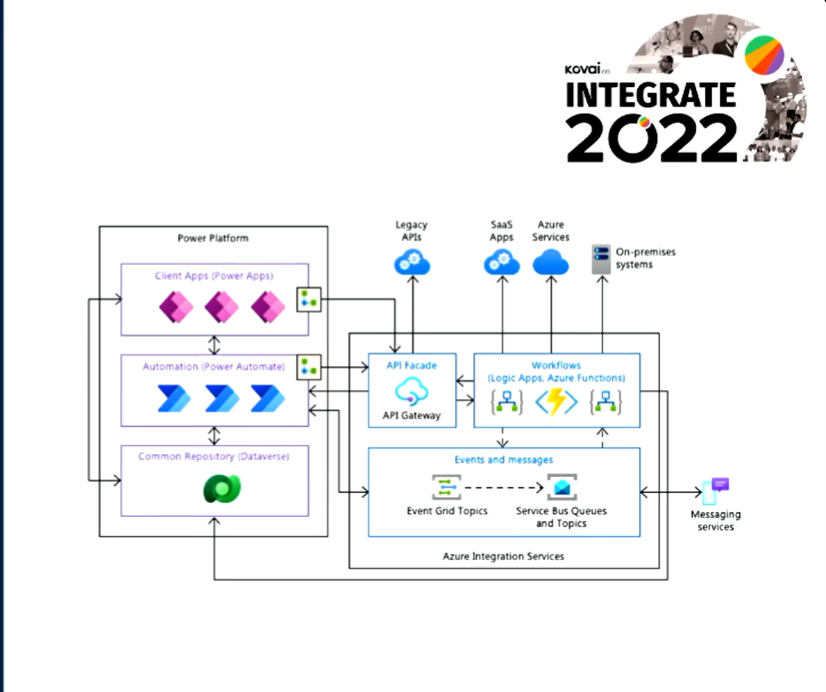
Balan narrated with an example, streamlining community people like Coca-Cola (B2C scenario)as seen in the below screenshot describing the working flow of business.
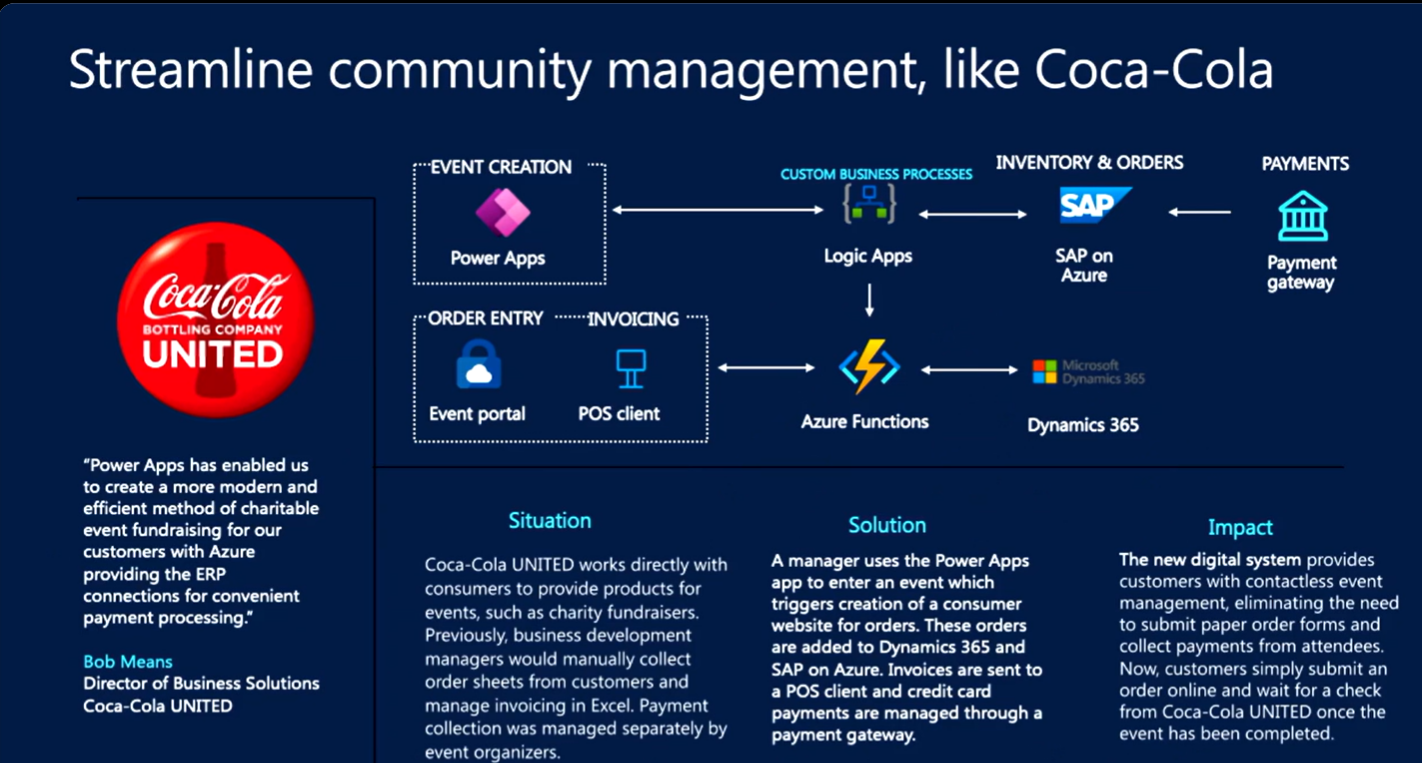
An increase in online business has led to building real-time applications, analytics, and experience around events. He highlighted the following topics
Balan explained the DHL supply chain where the team wanted to build a robotic integration warehouse consuming 1000’s processes within other components and analytics capabilities.
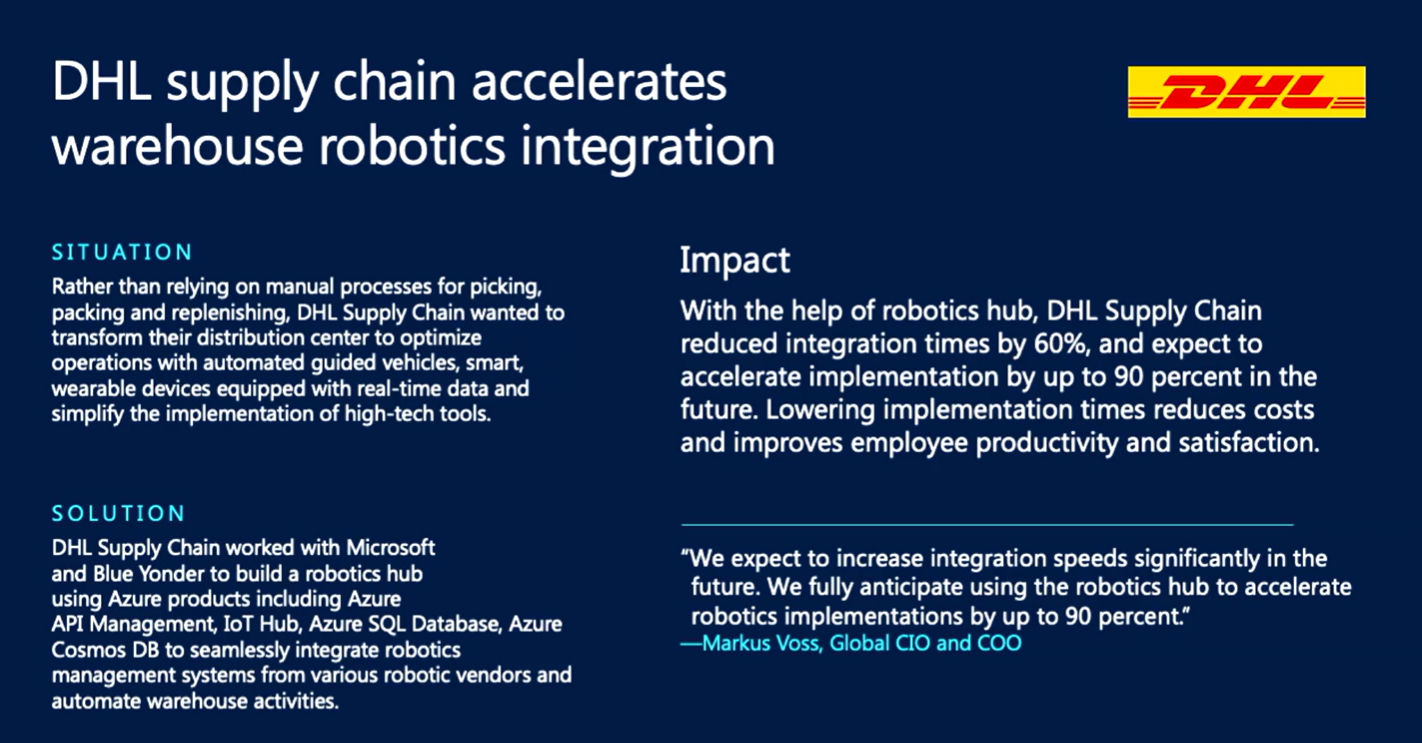

Balan invited Vikas Aggarwal, Enterprise Architect Integration & Engineering to give some insights about key benefits when implementing Azure Integration services which include
Enable us to deliver cloud native & serverless solutions
He mentioned that is the power of the cloud, we focussed on building rather than trying to identify volumetrics upfront. It is quite simple:
We pay for what we consumed on the platform
Created a comprehensive library of patterns to enable faster delivery.
Microsoft is your Integration you can build whatever you want, and that provides the flexibility to change. This enables us to quickly respond to everchanging customer needs.
Next, Vikas took a deep dive into integration patterns. Attached is the screenshot for the integration patterns.

With respect to AIS, the user can get:
As mentioned, this will take a slow step to move from BizTalk to Cloud, and he recently re-visited BizTalk Migration. His investigations included:
Customers have challenges with
Capability parity between BizTalk and AIS
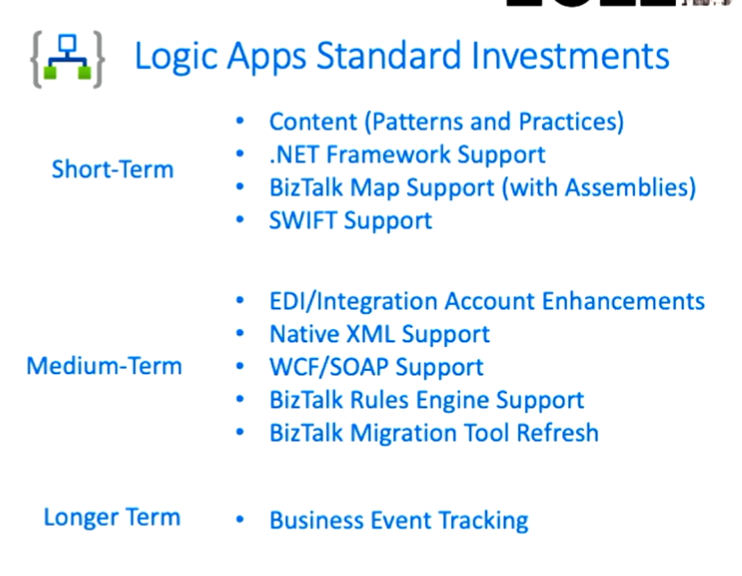
He mentioned that Microsoft is investing in Logic App designers, and he mentioned Intelligent integrations as well.

Balan mentioned upcoming investments: IPaaS and evolving Azure PaaS.

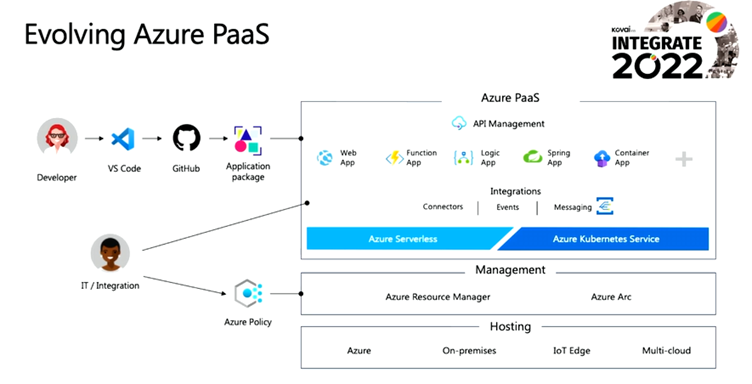
Finally, he summarized the session with a clear note on the state of integration and he threw light on the new improvements made.
Kent Weare presented the session on Application and SaaS Integration, which significantly focused on Application Modernisation and Azure Integration services and their advantages. Kent drove the session from a pro developer perspective, with demos being a significant part of the presentation.
The session began with the current application modernization trends. Kent listed down a few approaches that organizations prefer and are on-trend.
Followed by his talk in other generic terms, Kent shared the demo landscape,

He focused on the backend of this architecture, predominantly covering the stages having Azure Integration services. Meanwhile, the other half will be covered by Wagner in the upcoming session.
Scenario 1 – Order entry & Discount calculation

In this scenario, the Power app is going to access an API, and this API is going to expose a Logic App, which will further connect to a backend SQL Server. The features covered are Stateless Execution, VNET Connectivity, and SaaS Connectivity.
Scenario 2 – Shipping: Pickup Request

This scenario was primarily focused on Logic Apps covering the features of Stateful Execution, Azure messaging, and Microsoft Dataverse (SaaS) Integration.
Scenario 3 – Chatbot: Check on Shipping

Tracking is the focus in this scenario, where Kent explained how he achieved it by implementing an API. The features covered are Stateless Execution, Conversation AI (Chatbot), Bot Framework composer, and API Management Governance.
Scenario 4 – Delivery Status Updates

Regarding receiving delivery status updates, Kent used Twillio to achieve WhatsApp Integration.
In conclusion, Kent gave a takeaway on how Azure Integration services are scalable, agile, and extensible. Kent finally gave a call to action where he provided us with many resources regarding the usage of Logic App Standards.
Wagner Silveira – Former Azure MVP, Senior Program Manager (Logic Apps) @ Microsoft presented the session on Low code – pro code unite which did focus on how Power platform and AIS works well together and the scenarios to explain the same.
AIS is a combination of the following capabilities:
Microsoft Power Platform

Empower all individuals to be a part of the integration journey, from pro-IT developers exposing backend systems with APIs to citizen developers consuming those APIs in low code front ends.
Let’s see 3 scenarios here



Here is how to choose your service orchestrator based on the need and desired solution

Clemens Vasters who is well known as the top integration mind of Microsoft presented on the topic Event Driven Architectures which explained maximizing the use of Azure messaging services in building event driven architecture.
Event is something that captures the fact of the past, which we either don’t care about or take an action he added. When action is taken as a choice it is played in two effective ways or models, namely:

He continued with a story related to football, that emphasized solving customer’s problems upon integration with Eventim ticket portal.

Clemens defined Signal, Event, Event stream, and Jobs as follows:
Signal: The capture of an occurrence (statement of fact) during the operation of a software system
Event: A data record expressing a signal and its context. The context is expressed in metadata annotating the signal.
Event Stream: A chronological sequence of events belonging to the same context.
Job: Not an event. A description of a task that needs to be performed by some party. Preferably just once.
He then followed up with one of the best examples ‘Fire Alarm’ to mark the relationship between Observation, Signal, and Jobs:

Additionally, he provided an example stating that eventing and queue-based messaging are the functions used by modern apps, where he denoted “Event streaming is not ‘Modern’ and Queues are not ‘traditional’. Both are patterns of the state-of-the-art messaging infrastructure.”

Finally, Clemens talked about CNCF (Cloud Native Computing Foundation) CloudEvents, it’s current work, and eventing on Azure Cloud that marked the end of the session.
Kent and Wagner presented the logic apps deep dive session with the roadmap, patterns, and other significant updates. They initially started with feedback on the thoughts with Logic apps and its significance on the investment areas.
From the product updates point of view, it brought in a lot of things when compared to the previous year. The Inbuilt connectors which include Azure blog, Azure Table Storage, SFTP, and FTP is in the public preview stage. The SQL Storage provider runs your logic apps state in SQL rather than storage for more control of costs, hosting options and throughput. Apart from these, exports are also included in public preview. AuthN and managed identity are generally available and Swift encoder/decoder are in the Private preview which enables the validation of SWIFT based financial transactions.

Working on an improved designer is to make it faster and to improve the performance of the designer.




Eldert Grootenboer, presented the session on Service Bus. He is a program manager for Services Bus. He started with a quick introduction about, what is Service Bus, followed by the below agenda.
Service Bus has two authorization models – SAS (local) & Integrated Azure Identity model. It’s now possible to completely disable local SAS authentication

JMS 2.0 – for premium users. Support up to 100 Megabytes.

Eldert showed a live demonstration for Service Bus Premium Java & Spring JMS 2.0 API.
Minimum TLS 1.2 has been released recently with the below features.
These features will be released in a couple of weeks/ months or sooner.
The below features are in the early phase and still in the designing stage. So there is no timeline for when it will be released.
Eldert closed the session by asking for feedback about the new feature releases from the audience.
This blog is a transcript of the session “Streaming with Event Hubs & Stream Analytics” by Kevin Lam and Ajeta Singhal at INTEGRATE 2022.
Event Hubs is a simple, reliable, scalable, fully managed real-time data ingestion service that helps build dynamic data pipelines and respond quickly to business challenges by streaming millions of events per second from any source.
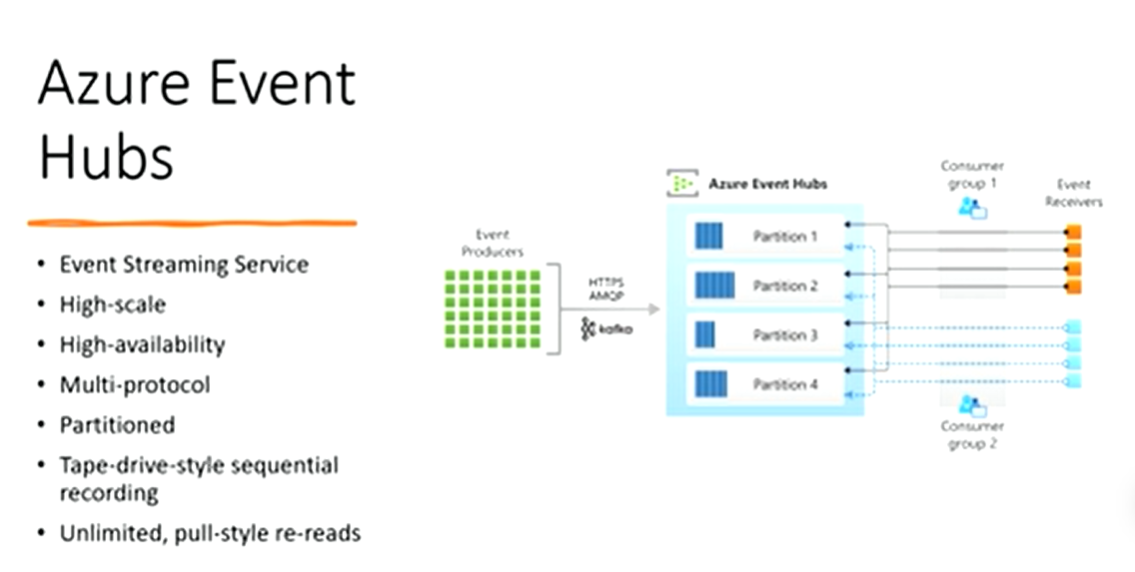
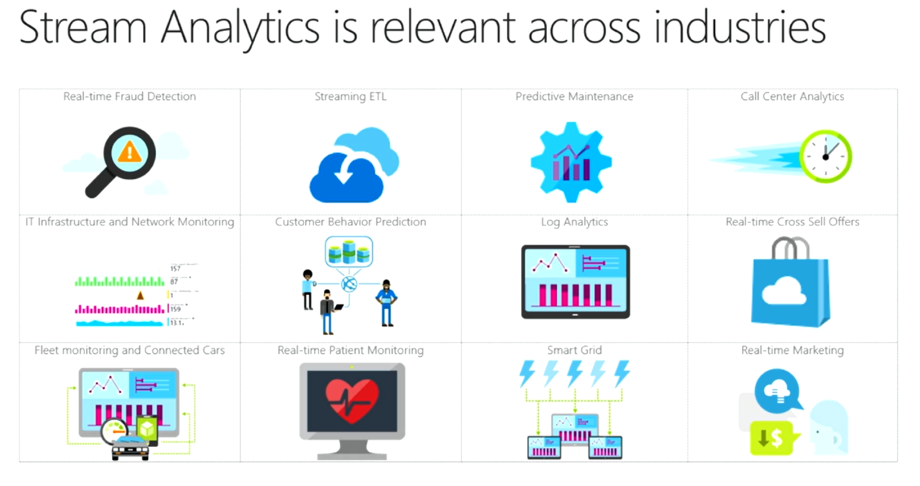
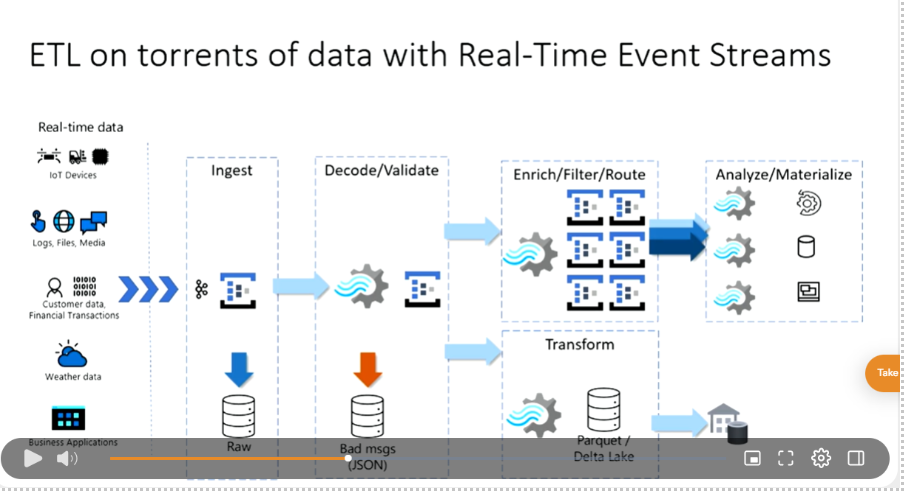
Elizabeth Barnitt from Microsoft Azure API management presented the session about the recent product update, deep dive, into the session on how you can use GraphQL to modernize API Stack with a quick demo.
She started the session with the API Management authorizations (public preview). API Management authorizations is a new capability that makes it easier to manage access tokens when sending requests to APIs based on OAuth 2.0 standard. It’s currently in public preview, this feature creates value for professional and citizen developers alike, supporting scenarios

Followed by a bunch of generally available updates with regards to API management and stack,
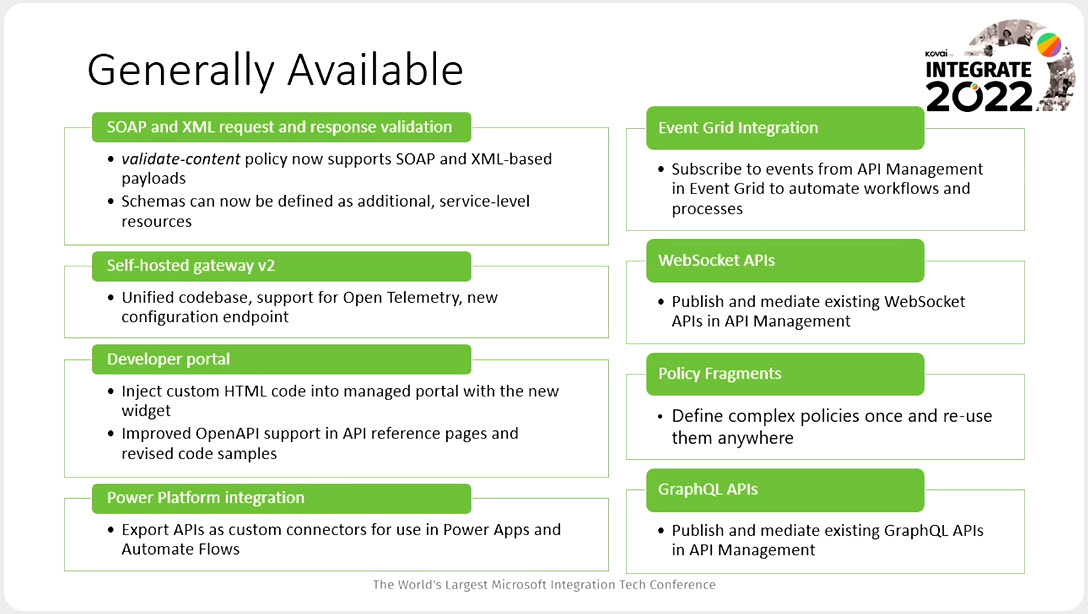
Before getting into the GraphQL, she discussed where REST APIs fall short and covered up a couple of points,
She also touch based on how it has been implemented in Windows Apps to call the categories and icons, top and bottom section
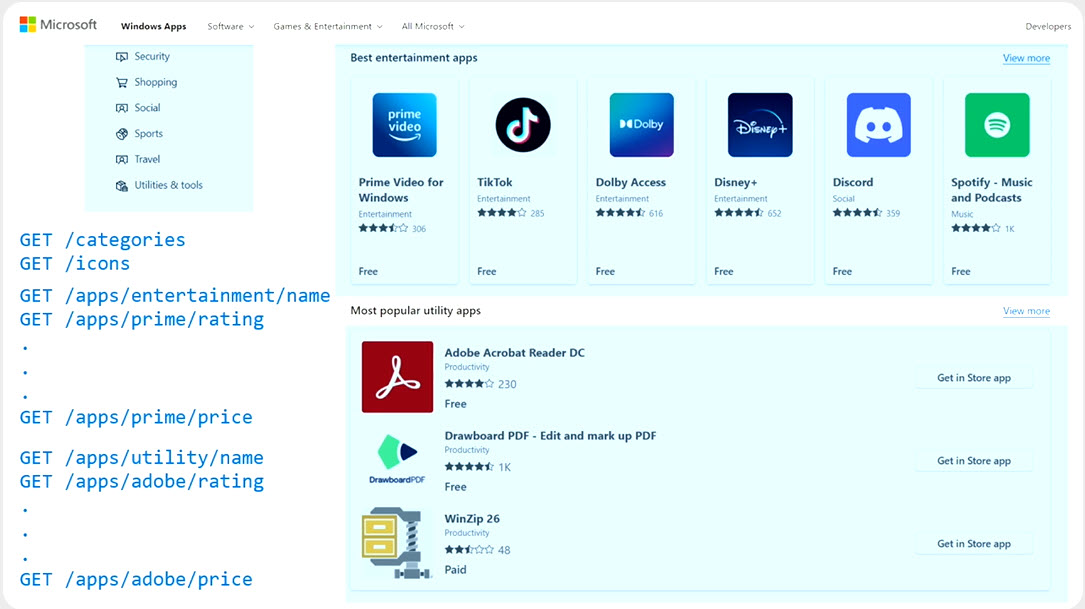
Like an API endpoint, GraphQL is an HTTP endpoint that prioritizes giving clients exactly the data they request and much more.
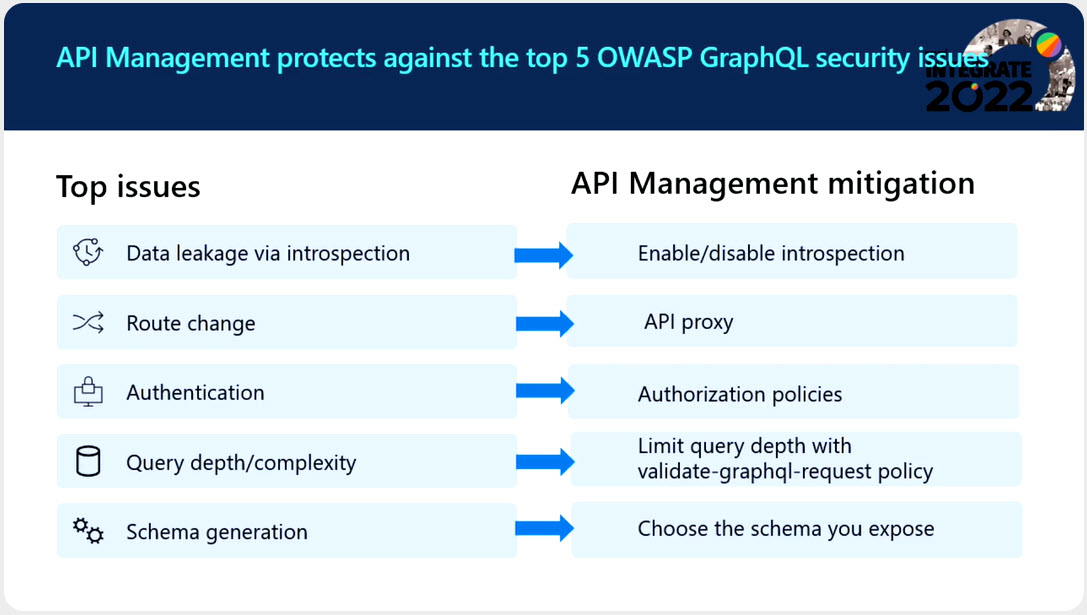
The advantages of GraphQL in quick words,
Followed by the advantages, she showed how we implement the GraphQL with a quick demo.
GraphQL is investing in the security issues below,
Finally, Elizabeth concluded with the take ways, as you can use GraphQL without losing your backend investments. Production GQL is easier and more secure with Azure API management.
Following the previous API management session, this session also focused on the same but in a different context. Martin Pankraz and William Eastbury joined us for the first time at INTEGRATE to help us get started with SAP OData APIs and demonstrated live integration scenarios using API Management.
Martin and William started the session with some figures giving us awareness of why we should care about SAP.

They gave a pure demo-based session and made it more interactive by bringing in scenarios discussed in previous sessions of the day.
Martin and William started the session by introducing the Ninja Cat stickers, followed by an interactive demo session. The first demo was a simple architecture where the Logic Apps is listening using twitter connectors.

Understanding the SAP OData flow complexity for integration was the central part of the demonstration. They also presented workflows based on SAP OData and interesting demos of how it is implemented in real-time. In specific, they also showed how this could be done with API Management.

Martin and William concluded the presentation with an interactive Q&A session and some resources based on this session for reference.
That’s a wrap on our summary of Day 1 at INTEGRATE 2022. We already looking forward to Day 2 and Day 3 sessions. Thanks for reading! Good night from Day 1 at INTEGRATE 2022.
Stay tuned with #INTEGRATE2022
This blogpost was prepared by:
Dhanush Amritha Christini Nithyapraksh Sabarish Rishivanth Gokulprasanth Sivaramakrishnan